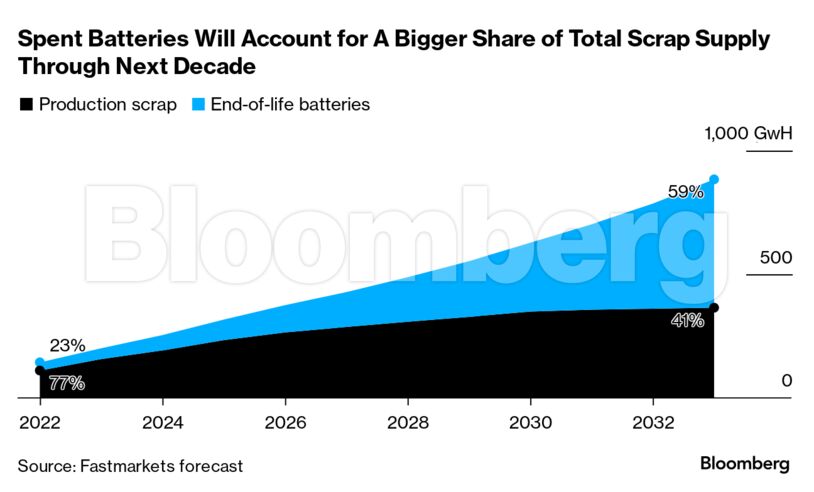The latest buzzword in battery materials sounds like a concept borrowed from astrophysics.
But “black mass” is just a very literal description of the intermediate product from recycling either spent electric-vehicle batteries or scrap from battery plants. It’s a dark, powdery cocktail of metals such as lithium, cobalt and nickel that’s emerging as a commodity in its own right.
There’s growing interest in battery recycling as the global electric-vehicle industry expands, and as carmakers and Western governments aim to build supply chains that bypass China.
Mentions of black mass in company earnings have grown — including recent instances from commodities trader Glencore Plc and chemicals giant BASF SE. Three market researchers — Benchmark Mineral Intelligence, Fastmarkets and S&P Global — have launched regular price assessments of the material since April.

“There is definitely increasing interest from automakers in black mass now,” said Jesline Tang, analyst at S&P Global Commodity Insights. Some have already announced partnerships or joint ventures to explore EV battery recycling opportunities, such as BMW AG, Ford Motor Co. and Mercedes-Benz Group AG.
Glencore unveiled a plan in May with Canadian recycling firm Li-Cycle to process black mass in Sardinia, Italy. BASF expects to produce black mass in Germany next year. And last week, an affiliate of trader Mercuria Energy Trading agreed a joint venture with a US recycler to help sell its black mass worldwide.
The metallic powder is made by crushing and shredding batteries or battery cells, extracting unwanted elements, then refining the remainder. For now, factory scrap generated in the production of batteries makes up the majority of the input material.
Recycled materials will account for 15% of the global supply of lithium, 11% for nickel and 44% for cobalt by the end of this decade, according to estimates from S&P Global Commodity Insights.
Still, there are plenty of headwinds to overcome.
The growing popularity and improved performance of lithium-iron-phosphate cells — or “LFP” — has helped reduce costs and spur adoption of electric vehicles. But LFP chemistry is a less attractive proposition for recycling.

At recent prices, nickel-cobalt-manganese batteries contain an average metal value of about $10,040 for every ton of cells, according to Fastmarkets. Materials based on LFP chemistry have a much lower value of $3,935 per ton, but can be more costly and technically challenging to process into black mass. That means less room for recyclers to make profit.
There’s also issues with open trading of black mass, which some countries, including in Europe, classify as hazardous. That’s a key concern in terms of packaging, transporting and trading it, said Leah Chen, analyst at S&P Global Commodity Insights.
“We’ve got lots of factories in Europe where we can shred batteries to make black mass but then it’s kind of stuck,” said Julia Harty, London-based analyst at Fastmarkets. “It’s a shame, as there’s so much attention on sustainability at the moment but yet the red tape makes lithium-ion battery recycling harder in Europe.”
Share This:
Next Article




